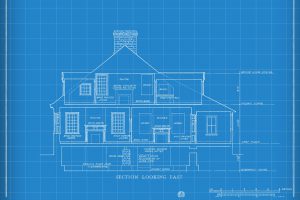The city that never sleeps stands out in many areas in Israel, including urban renewal. How does Tel Aviv’s renewal compare to other cities? That’s what this article explores.
Many refer to Israel’s real estate capital as the “State of Tel Aviv,” due to its exceptional uniqueness in many areas compared to other cities in the country. When it comes to the well-known National Outline Plan 38 (TAMA 38), Tel Aviv has its own rules—especially regarding urban renewal, the scale of activity, the developers involved, and, of course, the massive capital that flows into this enormous sector.
A fundamental difference lies in the land values, which are two to three times higher than in other cities. Due to the high cost per square meter, development remains profitable even when TAMA or city zoning rights are limited. While in other central cities developers typically need to construct three new apartments for every demolished one to make a project economically viable, the calculation in Tel Aviv is completely different.
Instead of focusing on apartment multipliers—the ratio of new units to existing ones—developers in Tel Aviv consider area ratios. That is: how many square meters will be allocated to the existing residents versus how many can be sold. In many cases, even if the ratio is lower than 1:2, the project is still profitable because sale prices can reach an astronomical 60,000–70,000 shekels per square meter.
The question of whether Tel Aviv’s land prices are justified arises repeatedly in various forums. Highly sought-after locations can command disproportionate prices simply because wealthy buyers are willing to pay almost any amount for a piece of them. Still, market data shows a sharp upward trend in Tel Aviv property values for several years, and it is expected to continue—giving developers confidence and justification to set high prices.
However, if the rate of price growth slows, some projects may not come to fruition, and certain developers could find themselves in trouble.
Tel Aviv’s “Quarter Plan” marks a historic precedent in establishing planning certainty regarding building rights. Unlike other Israeli cities, this plan sets clear and defined rules that bring about regulatory clarity, greater control over urban design, and safer, more informed development options for all stakeholders.
Thanks to this transparency, there is little room for vague interpretations of building rights, preventing unqualified players from making false promises to potential buyers and filtering them out of the market. As a result, the conversation between developers and residents now centers on quality—not quantity—as is still the case in many other cities.
What sets a high-quality developer apart—when construction volume is no longer the main criterion—is, first and foremost, financial stability. In Tel Aviv more than anywhere else, residents and professionals scrutinize a developer’s completed projects. They often prefer those who both develop and build in-house and who specialize in urban renewal.
Given that a significant portion of Tel Aviv’s construction is based on TAMA 38, demand for developers with expertise in this area is rising. In a groundbreaking move, the Tel Aviv Municipality even offers its residents guidance in choosing suitable developers for TAMA 38 projects, providing criteria to assess and compare contractor classifications.
The Quarter Plan, currently focused on Quarters 3 and 4, is just the beginning. Additional areas in the city are expected to receive detailed master plans, expanding construction activity even further. Moreover, Amendment 4 to the TAMA 38 law now includes many more buildings and streets within urban renewal opportunities, pointing to continued and significant momentum.
There’s no doubt that Tel Aviv will remain Israel’s real estate capital and a TAMA 38 powerhouse—and when it comes to its future development potential, the sky is truly the limit.
 What are the buyers looking for in the next property you’re going to sell?
What are the buyers looking for in the next property you’re going to sell?
 How the Dollar Value Impacts Real Estate
How the Dollar Value Impacts Real Estate
 Capital Gains Tax Discounts and Purchase Tax Reductions in 2025 (Also for Investors)
Capital Gains Tax Discounts and Purchase Tax Reductions in 2025 (Also for Investors)
 Rules and Considerations When Examining Boundaries and Plot Demarcation
Rules and Considerations When Examining Boundaries and Plot Demarcation
 Should You Invest in a TAMA 38 Investment Fund?
Should You Invest in a TAMA 38 Investment Fund?
 Contractor from Birth – The Complete Guide to Building a Private House
Contractor from Birth – The Complete Guide to Building a Private House